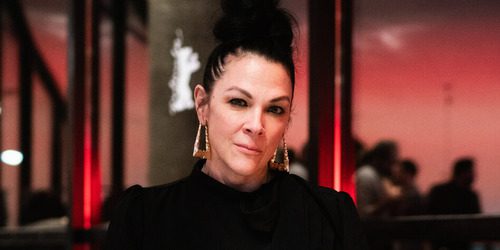Knives and Skin (read PopHorror’s review – here) is my favorite film of 2019. When I was offered this interview with writer and director Jennifer Reeder, I had never even heard of it. I took it because it sounded interesting and was written and directed by a woman. Wow. I am so happy that I did. If you haven’t seen it, please do yourself a favor, and rectify that as soon as possible. Jennifer and I discussed the film, her career, gender equality in the industry, and of course, horror movies.
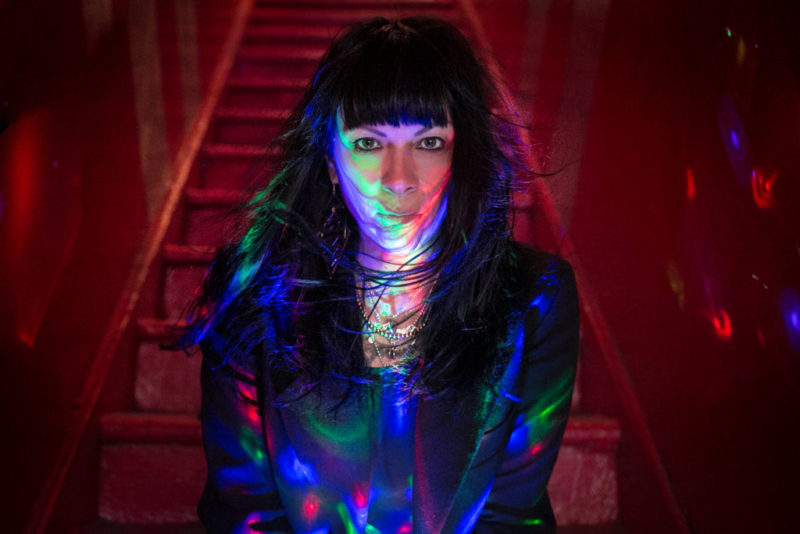 PH: Hi Jennifer, how are you?
PH: Hi Jennifer, how are you?
JR: Hi, good. How are you?
PH: I’m good, thank you. I watched Knives and Skin last night, and I have to say it’s probably one of my top favorites of this year. I thought it was fantastic.
JR: Oh! That’s so good to know! That’s great. I would have hated it if you were like, “And I hated it.”
PH: No, no. I’m excited about this because I thought it was fantastic. I was just sitting there like, “Wow. This is super cool.” So I’m super excited to speak with you. As we were watching Knives and Skin, I couldn’t help but pick up on some nods to David Lynch. Am I correct in my assumption?
JR: Yeah, definitely. I definitely feel like there’s… I mean, I have been influenced by the way that he uses visual language, the way that his production design is part of the narrative, content. I love the way that he tells stories by bending towards surrealism. And I love that he suggests that small towns can be the portal to the fourth dimension. So, yeah. The influence is there for sure.
PH: With the continuous use of neon, it’s both intriguing and appealing. It kind of felt like it was its own character in the film. Was that used to set a surreal tone?
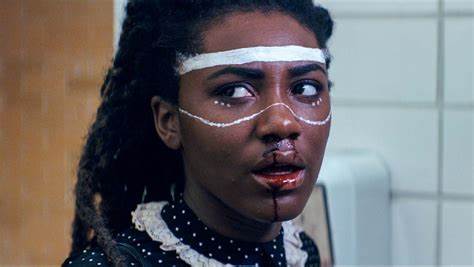
JR: Absolutely. In early conversations with my DP and my gaffer, I really just said that I really wanted the film to be kind of vibrating with femme energy. And I’m not being binary there. I said femme, it’s not feminine. I wanted the whole film to feel like that it has this really kind of femme, even like girl power energy in those pinks and purples. And then bleeding into kind of like cyans and blues.
I wanted the whole film to feel like it was sort of hovering just above reality, and it felt like using these really bold lighting choices was one way to suggest to the audience that they’re entering a world that they think they know, but it really is a bit of wormhole. And we shot with these beautiful vintage Todd AO anamorphic lenses, and so using those lenses, we knew they had a very special way of dealing with bold light like that. And we knew that the combination of this buzzing neon light with these anamorphic lenses would also create a really heightened visual and emotional atmosphere.
PH: I really loved the attention to detail. I noticed even the subtitles when they were whispering were neon pink.
JR: Right!
PH: The lipstick on at least one of the girls was neon pink. And I loved how in the classroom, it’s just regular lighting but then there’s in the doorway in the background, it’s illuminated in neon.
JR: Absolutely.
PH: My favorite parts were when the chorus was singing, and all of the 80s songs throughout. Can you tell me about your thought process on selecting those and why they were used?
JR: Sure. So I’ve dealt with that kind of a scene in the short films that I’ve made leading up to Knives and Skin, meaning a rearranged pop song sung by either one voice or multiple voices inside of a choral setting. And all of those short films are available on my Vimeo page. They’re free to the public so if anybody is curious about what I’ve done leading up to Knives and Skin, there’s a bunch of short films that have a lot of the same themes that you can watch for free. They’re much shorter. I cannot sing myself, but when I was a teenager, music was my religion. So when my parents or my teachers couldn’t understand me, like Cyndi Lauper did, or Siouxsie Sioux did. I think that’s still the case with a lot of young people that music is like a religion. Music is kind of like a life preserver on some levels. I wanted to bring in those musical elements over scenes where an audience might need to kind of sit with those singing voices and kind of think about what’s happening in the plot. Kind of taking stock of who all of the characters are.
It’s a little bit of break to kind of figure out what’s happening in the story. The singing scenes for me also are about a kind of counter-narrative to the main narrative where a lot of people are making mistakes. A lot of people are really upset and stuck in their lives. They’re kind of wilting under an emotional breakdown, and those singing scenes become the moments where you get to remember that life is full of beauty and synchronicity and harmony, and people working together to make something very special. All of those things, for me, is why I insisted on musical numbers in Knives and Skin, even though I wouldn’t consider it a musical film, necessarily. And like I said, those singing sequences had been vetted in the short films, which have gone all over the world in film festivals. So I knew the audience’s responses to those scenes.
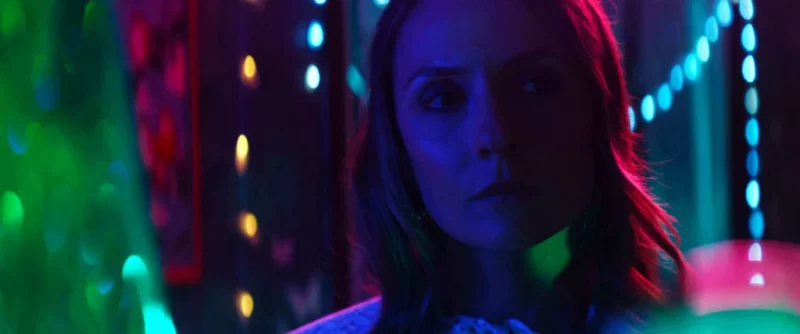
PH: I’m a huge The Go-Go’s fan so I was happy to see that included.
JR: That’s one of my favorite songs, actually. And it’s the first one that you hear them sing. Of course, I love that song in its original form, it’s such an infectious pop song. But when it’s slowed down, and sung by all of those voices, it really becomes a kind of girl power battle cry.
PH: You’ve mentioned your short films, and I noticed on your IMDB and reading some things online, that you’ve made over 40 short films, and that this is your first feature-length. What made you make the jump from shorts to feature-length film?
JR: On the one hand, feature-length films are hard to make. They take a lot of time, they take a lot of people, they’re expensive, and you really have to have the right content. A lot of ideas that filmmakers have, in my opinion, shouldn’t be a feature-length film. I see a lot of films that I think could have been great films if they were only like 87 minutes shorter. For me, I have a lot of ideas which I know, I’m realistic with myself, I know that those ideas shouldn’t be a feature-length film. And so I like to stay busy. I’ve made a bunch of short films that are about a small group of characters, or one central idea, and with those short of films I’ve been able to develop as a screenwriter and as a director, and I’ve really been able to find my voice as a filmmaker. So when it came to making Knives and Skin, I felt fully assured and confident going into the project. And because those short films had been, like I said, vetted through other film festivals and had been critically acclaimed and award-winning, etc., I basically had full creative freedom over Knives and Skin. And I think that can be pretty rare for a first feature-length project.
I directed a film that premiered at South by Southwest in 2017 called Signature Move, so that’s a feature-length film that I directed but didn’t write. It’s written by Fawzia Mirza and Lisa Donato. I mean, if you liked Knives and Skin, you might like this one too. It’s on Amazon. It’s called Signature Move. It’s a Chicago story about a Muslim lesbian who’s also a Mexican lesbian, like One Hot Summer in Chicago. It’s a super queer, super brown film with a Lucha wrestling element. It’s really fun. It’s a very light-hearted romantic comedy. It’s a celebration of people in culture. That was a super great experience. But again, it was a feature-length film that I directed but didn’t write, so Knives and Skin is very special in that it’s basically my first conventional feature-length film that I wrote and directed.
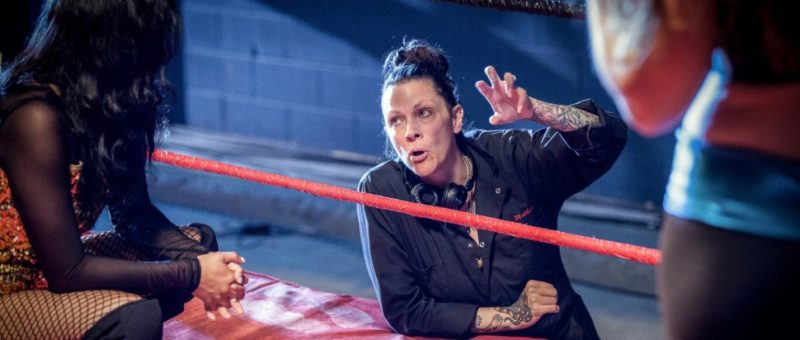
PH: I will definitely look that up because now I’m very intrigued. One thing that I really liked about Knives and Skin is the strong female characters. How do you feel that we could help increase gender equality in the industry?
JR: I think it’s like a 10-pronged fork. It doesn’t just take writers like you and festival programmers. It takes producers, and studios, and actors and crew. It sort of takes everybody to stop and recognize that there is an actual gender gap. It really exists. And it has nothing to do with the quality of a film that women can and have made and will make. It’s literally about stopping, recognizing it, and making a conscious decision to champion a female in this industry, at all levels, right? It’s not just the writers and the directors, but crew, and cast and programmers and the press, etc. And it’s just not that hard-to-find women in this industry. I just think that the gap exists because there are still a lot of lazy people, and it’s not just lazy men. I think there are a lot of lazy people who turn to the first person they think of, which sadly, is oftentimes a guy who might be a great guy, but it’s really time that we make a conscious decision to close that gap. It’s completely doable.
PH: I 100% agree. Thank you for that. I just have one last question for you, and that is, what is your favorite scary movie?
JR: My favorite very conventional scary movie is Carrie. I really love that story. I love an underdog, with her vicious mother who triumphs at the end in that bloody pink prom dress is something really significant to me about those kinds of forces. They combine at the end where you’ve got this super tiny femme girl in her silky pink prom dress, and she’s drenched in blood and burning the school down. That feels very significant to me.
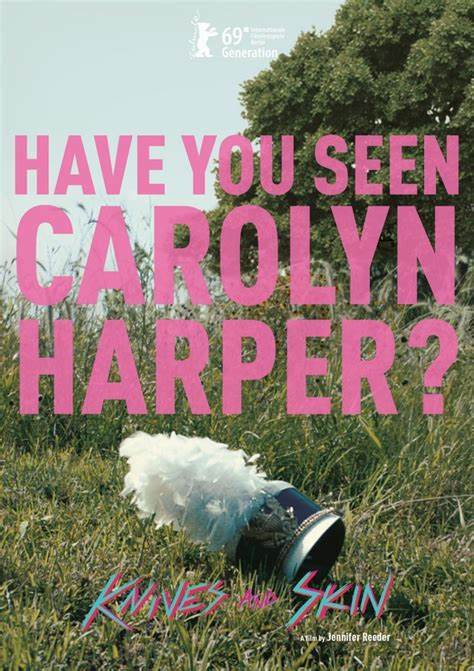
 PopHorror Let's Get Scared
PopHorror Let's Get Scared
